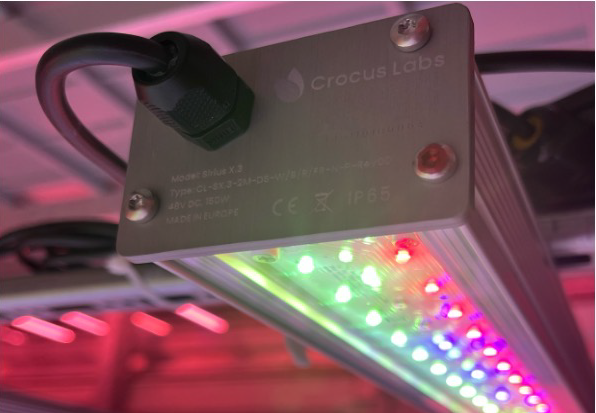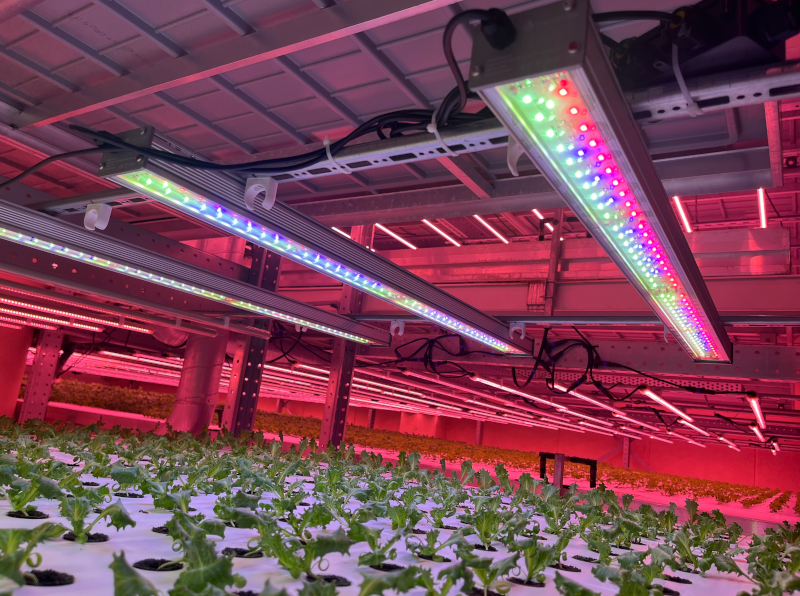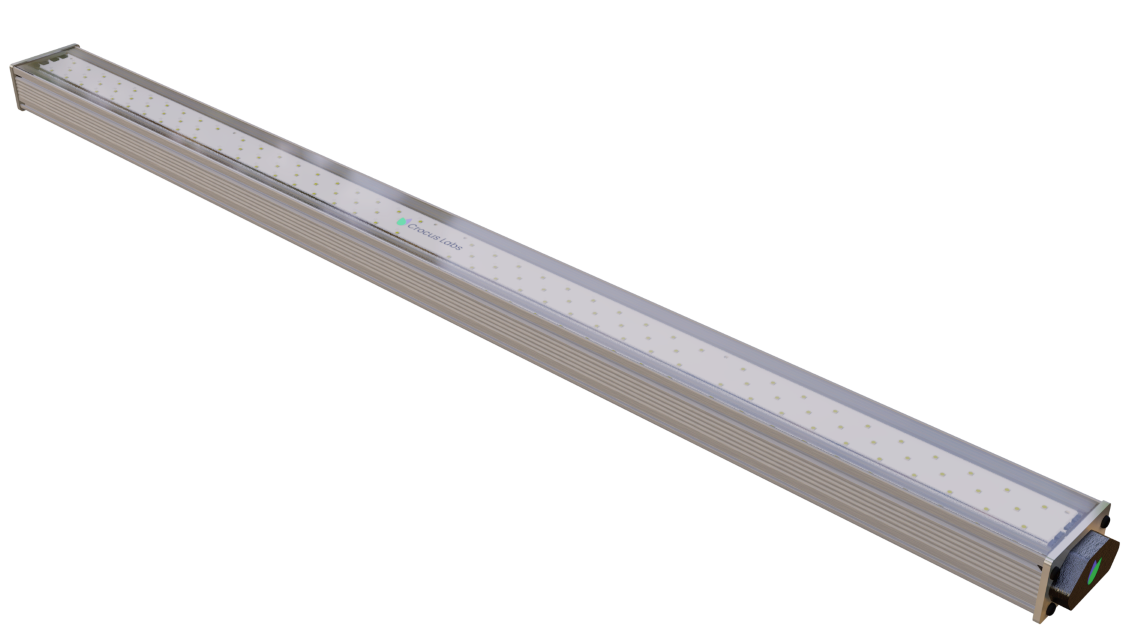


With the SiriusX.3, Eureca is expanding its portfolio with a highly flexible light source. Developed by our new partner Crocus Labs, an innovative company specializing in spectrally optimized LED lighting systems, the SiriusX.3 opens up new possibilities in research, development, and optical metrology.

Image source: Crocus Labs
The SiriusX.3 was developed by Crocus Labs as a high-performance plant lamp. Its special feature is its freely programmable spectral composition, which can be individually controlled via four LED channels. This allows customized lighting recipes to be created for research and practical applications—from basic work in plant sciences to innovative applications in optics.
The SiriusX.3 was designed specifically for plant research, offering maximum control over spectral compositions and growth phases. Potential target groups and areas of application include plant sciences and agricultural research, e. g., for simulating natural light cycles, optimizing growth conditions, or investigating photosynthesis processes.

Image source: Crocus Labs
In addition, the lamp also opens up new possibilities in other disciplines, such as:

Image source: Crocus Labs
| Type | Dimensions (L × W × H) [mm] | Power Consumption [W] | Weight [kg] | LED |
|---|---|---|---|---|
| SIRIUS X.3NEW | 1070 × 70 × 45 | 100 | 2.5 | B (455 nm), W, R (660 nm), FR (730 nm) |
The intuitive control software makes it easy to create and customize individual lighting recipes:
The current version of the web GUI is heavily geared towards light recipe control; enhancements to support camera control, synchronized lighting, and documented lighting profiles are in the works.

Crocus Labs develops advanced lighting systems with sensors and special LEDs to create an ideal lighting environment. The technology supports human biorhythms and enables precisely controlled horticulture. The company is supported by the European Innovation Council (EIC) Accelerator program and leading German venture capitalists.
Thanks to our close cooperation with Crocus Labs, we can now not only offer individual SiriusX.3 units directly through Eureca Messtechnik GmbH, but also realize customized series production for special requirements. If you need other designs or wavelength ranges, Crocus Labs can develop and manufacture corresponding special solutions for suitable quantities.
The full power of the SiriusX.3 is revealed when combined with our DIY microspectrometer. The precisely controllable lamp enables dynamic experiments in which the spectrum is specifically varied and analyzed simultaneously with the spectrometer. This allows effects to be visualized in real time—an invaluable advantage for research, teaching, and development.
We have already published a current application example with the spectra of the SiriusX.3 on our website. This impressively demonstrates how versatile the lamp is in terms of spectral programming and how well the measurement results can be recorded and documented with our spectrometers.
The dynamic SiriusX.3 (length 1.5 m) is ideal for smaller areas, racks, and experimental setups. If the same principle is to be applied to larger areas such as greenhouse tables, growth rooms, or multi-story shelving systems, larger modular lights with higher total PPF, better surface homogeneity, and robust protection against moisture and dirt are required.
Eureca plans and delivers such solutions in collaboration with Metaphase and OPT:
Metaphase: robust, industrial-grade LED modules and strips with high light output and reliable thermal management—excellent for tiling over large areas.
OPT: in addition to a broad standard portfolio, also offers customer-specific luminaires – with defined spectral mix (e.g., 450 nm blue, 660 nm deep red, optional 730 nm far red/photomorphogenesis, white channels), optics (beam angle/lenses), lengths/form factors, and IP protection for humid, wet, or dusty environments (e. g., IP65/67)
Those who love the dynamics and spectral flexibility of SiriusX.3 can seamlessly scale the principle to large areas with Metaphase and OPT luminaires – robust, efficient, and precisely tailored to cultivation goals. Contact us: We will advise you on the right system design!

PPFD = Photosynthetic Photon Flux Density (unit: µmol m–2 s–1)
Meaning: How many photosynthetically active photons (400–700 nm, »PAR« = Photosynthetically Active Radiation) strike 1 m² of leaf surface per second. It is therefore the photon flux density, not the electrical power of the lamp or its brightness in lux.
So (greatly simplified, assuming homogeneous distribution): average PPFD ≈ sum of PPF of all lights / illuminated area
In practice, however, height, optics/beam angle, overlap, reflections, and shadows significantly influence the distribution.
Although SiriusX.3 was developed as a plant lamp, its technical properties make it a highly interesting light source for image processing tasks. Based on theoretical models and initial internal tests, we see great potential for:
The current control interface is currently optimized primarily for plant research. However, thanks to its modular architecture, the software can be flexibly expanded—for example, for synchronization with camera systems or specific lighting profiles for image processing.
We are actively seeking partners who would like to join us in tapping the potential of SiriusX.3 in image processing.
The Sirius.X3 (Article number 09.06.0001) is now also available from Eureca. These lamps are also available in small quantities from our Maker Shop.
A suitable LED power supply in a metal housing is the HLG-120H-48A from Mean Well. It can also be purchased from Eureca. Small quantities can be conveniently ordered from our Maker Shop.

Here you can easily ask a question or inquiry about our products:
Last update: 2025-17-12
